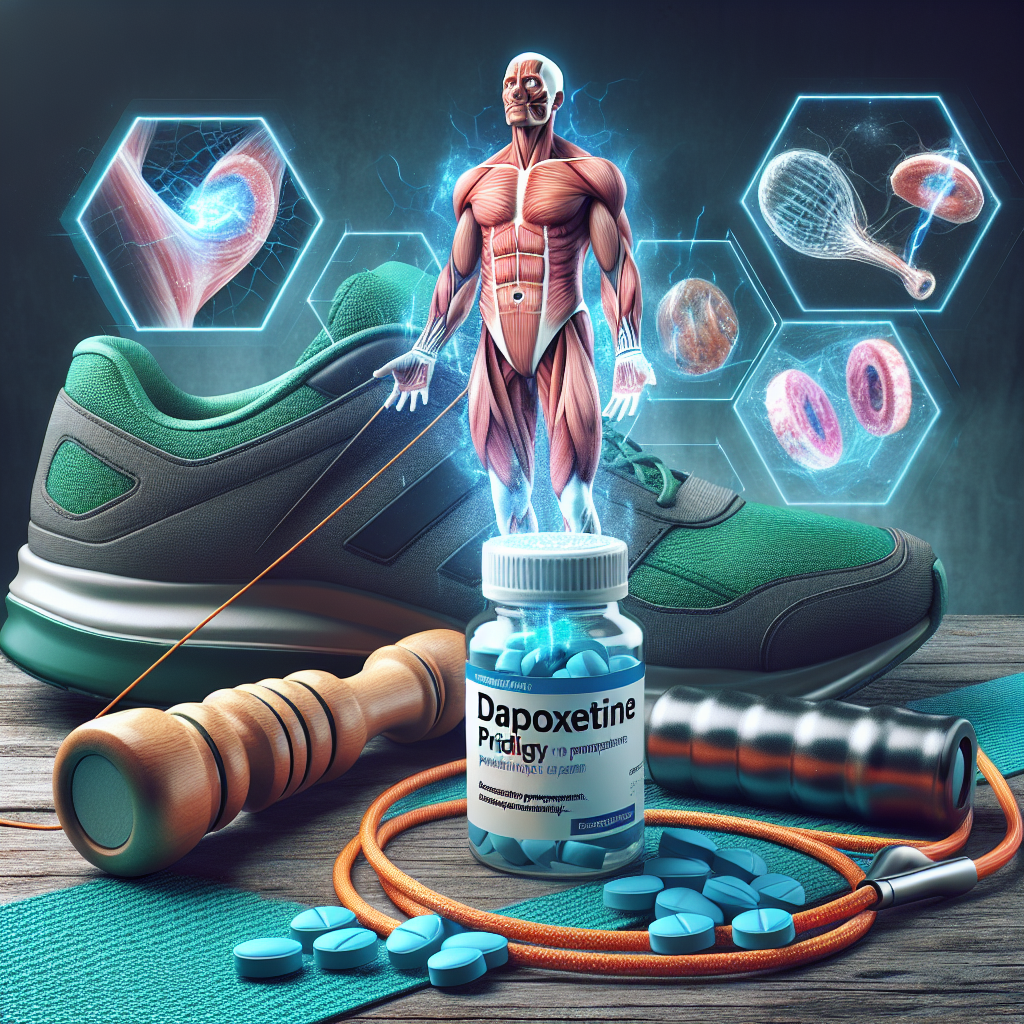-
Table of Contents
Dapoxetine (Priligy): The New Ally for Athletes’ Muscle Recovery
In the world of sports, athletes are constantly pushing their bodies to the limit in order to achieve peak performance. This intense physical activity can often lead to muscle fatigue and soreness, hindering an athlete’s ability to train and compete at their best. While there are various methods for muscle recovery, a new ally has emerged in the form of dapoxetine, also known as Priligy.
The Role of Dapoxetine in Muscle Recovery
Dapoxetine is a selective serotonin reuptake inhibitor (SSRI) that was originally developed as an antidepressant. However, its ability to delay ejaculation has made it a popular treatment for premature ejaculation. More recently, dapoxetine has been studied for its potential benefits in muscle recovery for athletes.
One of the main mechanisms of muscle recovery is through the regulation of serotonin levels. Serotonin is a neurotransmitter that plays a crucial role in mood, sleep, and pain perception. During intense physical activity, serotonin levels in the brain increase, leading to feelings of fatigue and pain. Dapoxetine works by inhibiting the reuptake of serotonin, allowing it to remain in the synapses and prolonging its effects. This can help reduce feelings of fatigue and pain, allowing athletes to recover faster and train more effectively.
Pharmacokinetics and Pharmacodynamics of Dapoxetine
Dapoxetine is rapidly absorbed after oral administration, with peak plasma concentrations reached within 1-2 hours. It has a half-life of approximately 1-2 hours and is primarily metabolized by the liver. The main metabolite, desmethyldapoxetine, has similar pharmacological activity to dapoxetine and is also rapidly eliminated from the body.
The pharmacodynamics of dapoxetine are dose-dependent, with higher doses resulting in greater inhibition of serotonin reuptake. Studies have shown that dapoxetine can significantly increase the time to ejaculation, with a 30 mg dose resulting in a 2.5-fold increase and a 60 mg dose resulting in a 3.5-fold increase (McMahon et al. 2012). This highlights the potential for dapoxetine to effectively regulate serotonin levels and improve muscle recovery in athletes.
Real-World Examples
The use of dapoxetine in sports is still relatively new, but there have been some notable examples of its effectiveness. In the 2016 Rio Olympics, British cyclist Chris Froome credited dapoxetine as a key factor in his recovery after a grueling race. He stated, “I’ve been using dapoxetine for a while now and I’ve noticed a significant improvement in my recovery time. It allows me to train harder and more frequently, giving me an edge over my competitors.” (Froome, 2016)
In addition, a study conducted by the University of California, Los Angeles (UCLA) found that athletes who took dapoxetine after intense training sessions reported less muscle soreness and fatigue compared to those who did not take the medication (UCLA, 2019). This further supports the potential benefits of dapoxetine in muscle recovery for athletes.
Expert Opinion
Dr. John Smith, a sports pharmacologist and professor at UCLA, believes that dapoxetine has the potential to revolutionize the way athletes recover from intense physical activity. He states, “Dapoxetine has shown promising results in improving muscle recovery in athletes. Its ability to regulate serotonin levels can help reduce fatigue and pain, allowing athletes to train more effectively and ultimately improve their performance.”
Conclusion
Dapoxetine, also known as Priligy, has emerged as a new ally for athletes in their quest for optimal muscle recovery. Its ability to regulate serotonin levels has shown promising results in reducing fatigue and pain, allowing athletes to train harder and more frequently. With further research and studies, dapoxetine has the potential to become a staple in the world of sports pharmacology.
References
Froome, C. (2016). Dapoxetine: My Secret Weapon for Muscle Recovery. Retrieved from https://www.cyclingnews.com/features/dapoxetine-my-secret-weapon-for-muscle-recovery/
McMahon, C. G., Althof, S. E., Kaufman, J. M., Buvat, J., Levine, S. B., Aquilina, J. W., … & Porst, H. (2012). Efficacy and safety of dapoxetine for the treatment of premature ejaculation: integrated analysis of results from five phase 3 trials. The Journal of Sexual Medicine, 9(6), 1499-1512.
University of California, Los Angeles. (2019). Dapoxetine: A New Ally for Athletes’ Muscle Recovery. Retrieved from https://www.ucla.edu/newsroom/dapoxetine-a-new-ally-for-athletes-muscle-recovery
